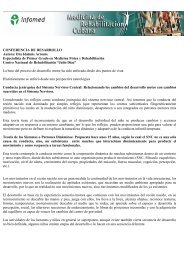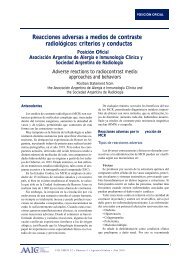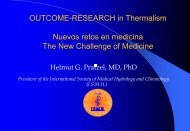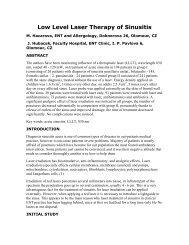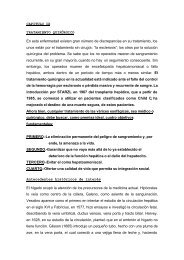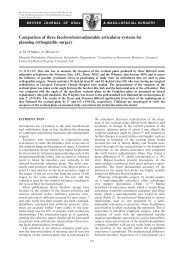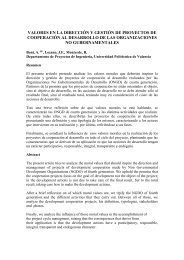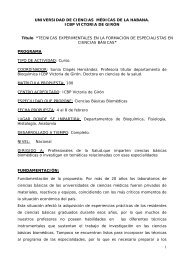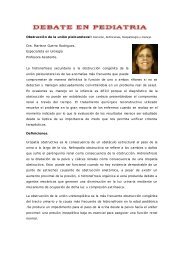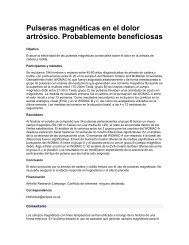Perioperative Anaphylaxis
Perioperative Anaphylaxis
Perioperative Anaphylaxis
You also want an ePaper? Increase the reach of your titles
YUMPU automatically turns print PDFs into web optimized ePapers that Google loves.
444<br />
Mertes et al<br />
Challenge Tests<br />
Indications for these tests are limited. They are restricted to local anesthetics,<br />
b-lactams, and latex. 105 They should only be performed in the situation of negative<br />
skin tests. Local anesthetics can be tested by subcutaneously injecting 0.5 to 2 mL<br />
of undiluted anesthetic solution (without epinephrine). The test is considered negative<br />
if no any adverse reaction occurs within 30 minutes after injection. 106<br />
PREVENTION<br />
Primary Prevention<br />
Prevention of anaphylaxis has two major objectives: (1) preventing the sensitization of<br />
a patient to a particular allergen, or (2) preventing the occurrence of an anaphylactic<br />
reaction to a reintroduced allergen in a presensitized patient. In this regard, prevention<br />
of latex allergy in spina bifida or multioperated children by primary prevention, which<br />
consists of avoiding latex during medical and surgical care of these patients, has been<br />
found to be very effective. 107 Similarly, the wearing of powderless, low-latex-allergen<br />
gloves by health care workers has been proposed as a possible means to reduce the<br />
levels of latex aeroallergen in the operating room and the rate of sensitization to latex in<br />
health care workers.<br />
Secondary Prevention<br />
Avoidance of causal agent<br />
Prevention of anaphylactic reactions relies mainly on accurate documentation of<br />
previous reactions and avoidance of the incriminated drug. During the preanesthetic<br />
consultation, a detailed history should be taken with special emphasis on atopy,<br />
drug allergy, and allergy to latex and tropical fruits. The use of a specific questionnaire<br />
is particularly helpful. 64,105<br />
Latex-sensitive patients should be managed by complete avoidance of potential<br />
latex exposure. 105,108 This avoidance is most easily achieved if a comprehensive institutional<br />
policy exists. Patient care must be carefully coordinated among all professionals,<br />
including pre- and postoperative nursing and operating teams. Whenever<br />
possible, the patient should be scheduled for elective surgery as the first case of<br />
the day to reduce exposure to aerosolized latex particles. Warnings identifying<br />
a risk for latex allergy should be posted inside and outside the operating room and<br />
in perioperative care areas, and the patient should wear a medical alert bracelet or<br />
necklace. A checklist of recommendations should accompany the patient throughout<br />
his or her hospital stay. In addition, a list of readily available non-latex alternatives<br />
should be established in collaboration with the facility’s central supply service and<br />
should be prominently displayed in patient care locations.<br />
Steroids and Antihistamines<br />
Pretreatment with corticosteroids or histamine receptor antagonists, by either H 1 or H 1<br />
and H 2 receptor antagonists, remains controversial. It has been proposed as an efficient<br />
way to reduce anaphylaxis due to chymopapaine administration. 109 Prophylaxis<br />
has also been found to reduce the severity but not the overall incidence of adverse<br />
reactions to dye. 110<br />
Pretreatment with H 1 and H 2 receptor antagonists has been found to reduce histamine-mediated<br />
adverse effects in various studies. 42,49 Antihistamine administration<br />
was effective in reducing the adverse effects of nonimmune histamine release<br />
following muscle relaxant, gelatin, 49 or vancomycin 42 administration.



